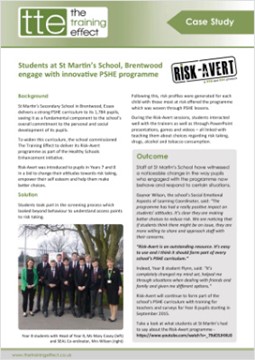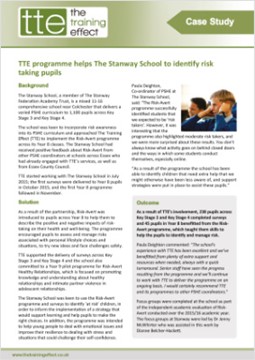Our outcomes - Secondary
Improves self-efficacy for young people
Improves emotional health and feelings of well-being for young people
Increases the resilience of young people
Develops decision-making skills for young people
Changes attitudes and opinions related to engagement in risk-taking behaviours
Builds positive social norms
Our outcomes - Primary
89% of pupils more aware of harmful risks
Recognise difference between feeling safe and unsafe - Before 75% - After 97%
Know what to do in a risky situation - Before 59% - After 92%
Pupils confident they could manage a risky situation - Before 43% - After 83%




